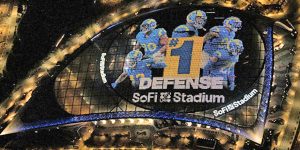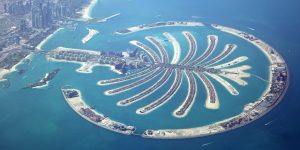Architects, innovators, and city planners are putting more focus on how designs look from above.
In the last decade—notably the last few years, new structures, city designs, and landmarks have been debuting that put great attention to how they are viewed from above. Formerly, we typically have viewed architecture, sculptures, and even large advertisements from street view—below—you know—where we stand. But recently, the most talked about unveilings all put an incredible amount of expense to how they are seen from above. An angle that a significant minority of viewers exist, but a massive majority of viewers can now see.
Why are we consuming higher views more often?
The average person having access to see high quality views from above has exponentially grown in the last decade.
The accessibility of high-quality drone cameras has provided a low-cost option to capture elevated panoramic views. Footage that once was only obtainable by hiring professional camera crews in costly helicopter rentals. The advancement of drone technology now allows nearly anyone to afford professional grade ariel equipment—and the footage all the more abundant to viewers everywhere.
The platforms in which this footage is consumed is in front of us more often as well. Think about how many above-views of cities and/or landscapes you have seen just this week on various live broadcasts, social video posts, or advertisements.
The accuracy and compiling of new imaging satellites in recent years has also provided users on popular mapping websites or apps to look down on any area around the globe as if viewing from a celestial vantage point. At the tap of a finger!
Commercial air traffic has increased over the years as well. With growing airline fleets and more convenient and affordable travel accessibility, more eyes are in the air than ever before.
Locations with higher air traveler traffic, are more prone to benefit from structures designed for an overhead audience.
Because of this, cityscapes, parks, and open terrains are a wide-open canvas for creativity and attention!
Examples
Architecture with an above view emphasis can be found around the globe. For example, Lo Fi Stadium in California features a digital screen display that, no less, acts as a billboard to the sky. A structural cost that would have been denied in decades past.
One of the most recent architectural clamors is the Las Vegas Sphere.
It’s not just individual structures, but entire city blocks and even geographical spaces now embrace intentional top-view design. The Palm islands in Dubai finished construction in the late 2000s and in recent years, the continuation of the development on neighboring island formations depict other recognizable shapes and designs.
Innovative designers in all industries and specialties are joining in on the creative achievements of targeting overhead passersby. An industrial designer in Japan developed a speed boat fabricated to look like a zipper. From above, the zipper boat’s wake trailing behind forms an optical display as if the sea itself is being unzipped.
Why?
With more people looking down upon these designs either in person, or from a multitude of media outlets, there is opportunity to showcase creativity, advertisement, or just the general flexing of the accomplishment of mankind. Whether you find these to be an eyesore or a marvelous wonder, they certainly draw attention and conversation that has measurable results on tourism, publicity, and design exposure.
What will the future hold?
At least one thing is to be said about the future of aerial-oriented design, it will be interesting see what creative design structures will surprise us next.
And further, perhaps the greater question, what new and innovative ways will emerge for the general public to view these anomalies…from above?




